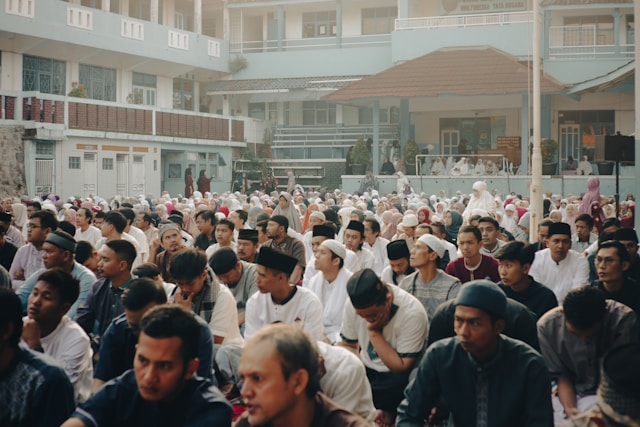From rowing races to a lantern-lit neighbourhood, Indonesians have different ways to mark the beginning of Ramadan and also, to express why the holy month is a hallowed moment in time for the Muslims.
With various cultures come various traditions. Such can also explain why Ramadan can be memorialised and celebrated in different ways depending on where you are in Indonesia. Some traditions find their roots in the early introduction to Islamic teachings in said region while others can be traced back to the societal values that are still relevant to this day. Some traditions can take up a massive scale so much so that it has transformed into a tourism attraction.
The following are some of the notable Ramadan traditions across different cultures and regions of Indonesia; some of which have even managed to stand against the test of time.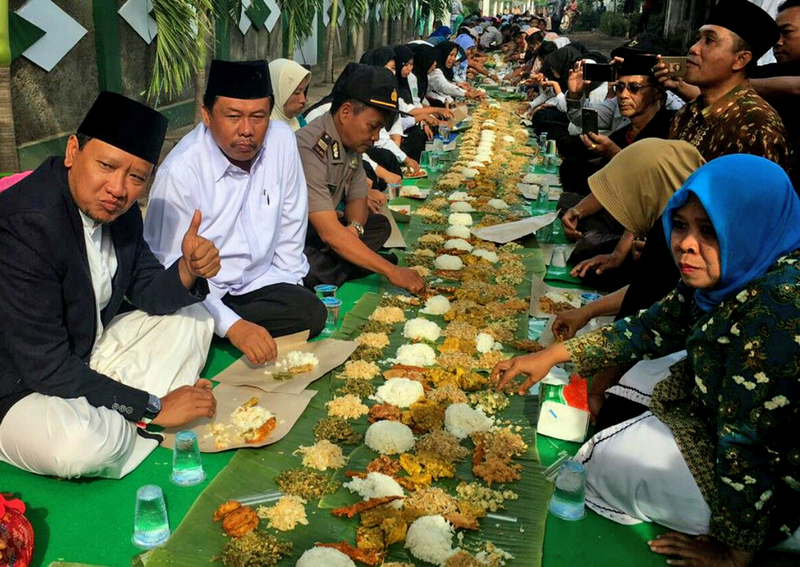
Megengan (Surabaya, East Java)
The Surabayan natives must have been more than familiar with the tradition of megengan. Typically held either a few days leading up to or in the early days of Ramadan, megengan is considered by the locals as a ceremony during which they get to express their apologies to one another — something that commonly takes place after the completion of Ramadan. The neighbouring residents would typically offer each other kue apam; the word ‘apam‘, in Arabic, can be roughly translated in English as ‘sorry’. Furthermore, the kue apam offerings would often be adorned with other delicacies such as steamed buns, lemper, donuts, and sheet cakes.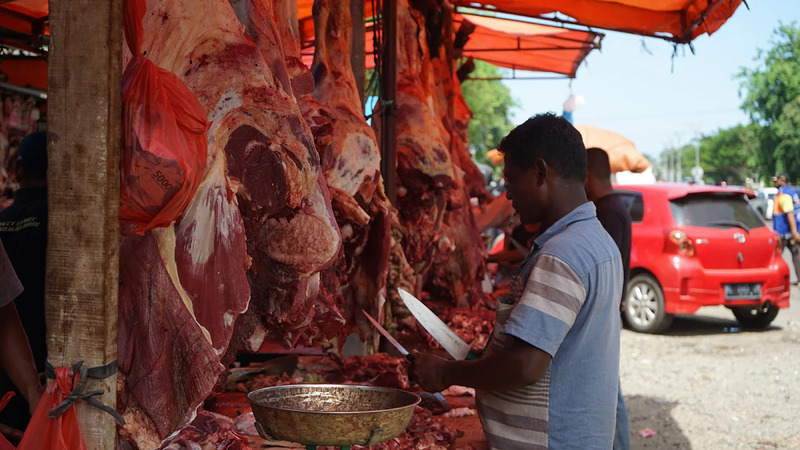
Meugang (Aceh)
Dating back to the 1600s when Sultan Iskandar Muda reigned over the entire province that today is known as Aceh, the tradition of meugang or makmeugang is often held during major Islamic milestones, including Ramadan. The tradition of meugang typically consists of the butchery of various livestock such as goats, cows, buffaloes, chickens, and geese. The protein would later be cooked and consumed together with the entire local community, the tradition further symbolises the meaning and importance of sharing with one another — in particular, the sharing of foods between the more fortunate and the less fortunate. It is believed that meugang was rooted in Sultan Iskandar Muda’s belief that, as a sultan, he must also be responsible for the well-being of his people without discriminating against the latter’s economic status.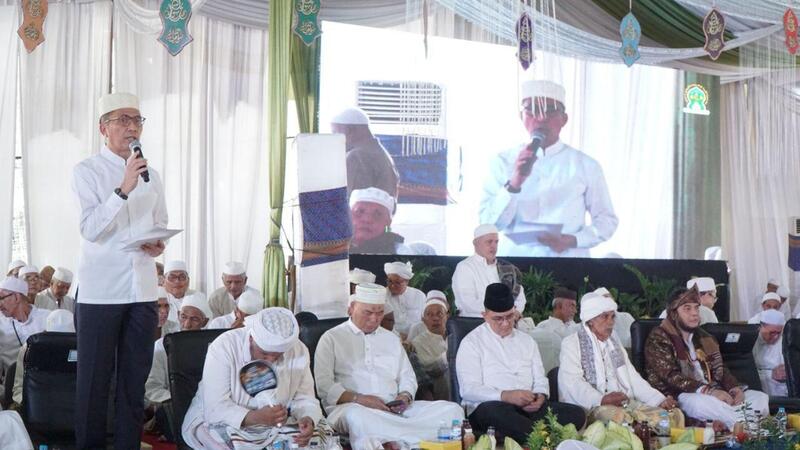
Ziarah kubro (Palembang, South Sumatra)
For the Palembang natives and locals, Ramadan could not begin without paying respect to the dead first and foremost. In a tradition known as ziarah kubro, the locals would begin their Ramadan by carrying a pilgrimage to the graveyards belonging to some of the most influential Islamic figures in the province. One of the more mandatory pilgrimage destinations for ziarah kubro is the tomb of the late founders of the Sultanate of Palembang Darussalam. The sultanate was first conceived in the 1600s, which also prompted the spread of Islamic teachings in the community that is today known as Palembang. Rumour has it that the direct, biological descendants of the sultanate are still alive to this day.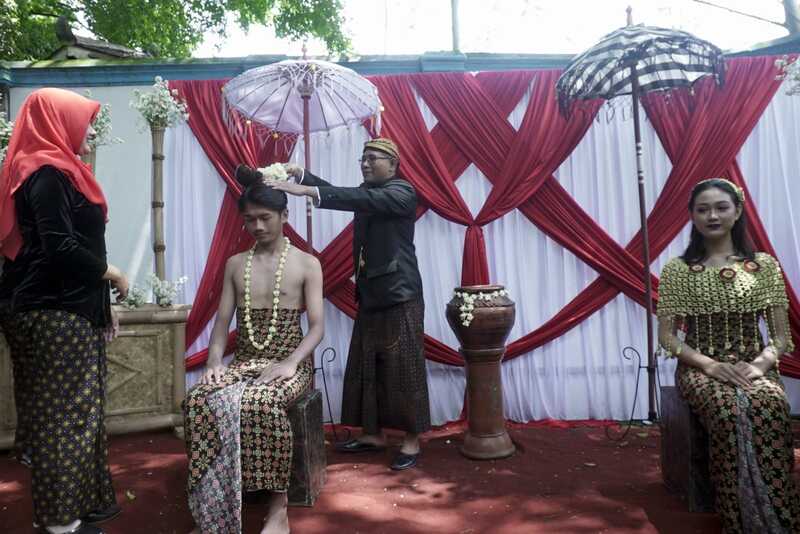
Padusan (Boyolali, Central Java)
In Boyolali Regency, Central Java, it is important to ring in Ramadan by conducting a local tradition known as padusan. Typically presided by the head of regency and considered an authorised, by-the-government activity, the tradition of padusan finds the locals bathing in the natural water sources across the regency that are believed to be religiously sacred, such as Umbul Temanten, Umbul Duda, dan Umbul Ngabean — the word ‘umbul’ in Javanese can be roughly translated in English as ‘wellspring’. By bathing in the sacred water sources, the locals believe that they can come out the other side cleansed and purified for Ramadan. The tradition is also commonly followed with dangdut entertainment and local feasts.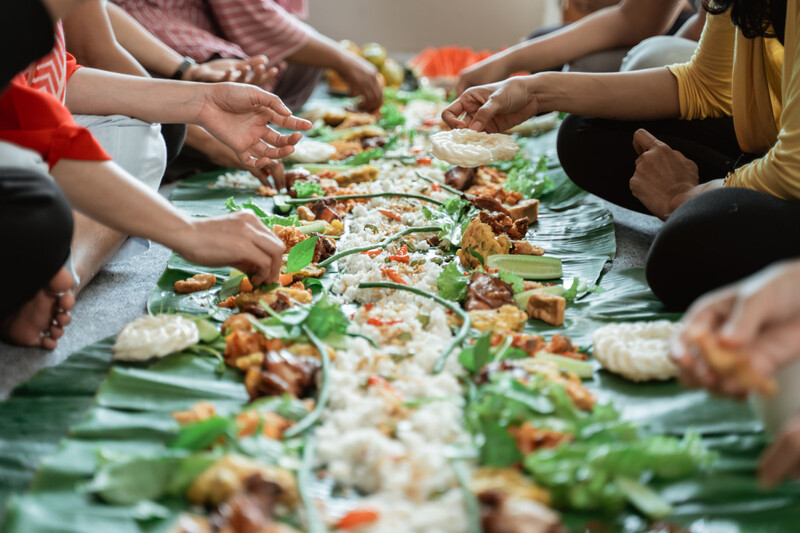
Megibung (Karangasem, Bali)
Even though most native Balinese are also adherents of the Hindu religion, the ones who adhere to Islam in Karangasem, Bali, often carry on a tradition of their own leading up to Ramadan, called megibung. Essentially, the tradition of megibung is a derivation of a local feast, during which a bulk of white rice is placed in a vessel called gibungan. There is a certain set of ethical behaviours that the locals must follow during megibung, some of them being the attendees must sit in a circle and a cross-legged position, they are obligated to wash their hands before having their respective meal, it is frowned upon to drop rice or crumbs from their lips during the feast, and no attendee should ever remove themselves from the circle until every single one of them has finished their respective meal. The biggest number of locals participating in megibung was recorded in 2006, during which 20.520 people were in attendance. Ultimately, megibung is believed by the locals as a symbol of togetherness and religious equality.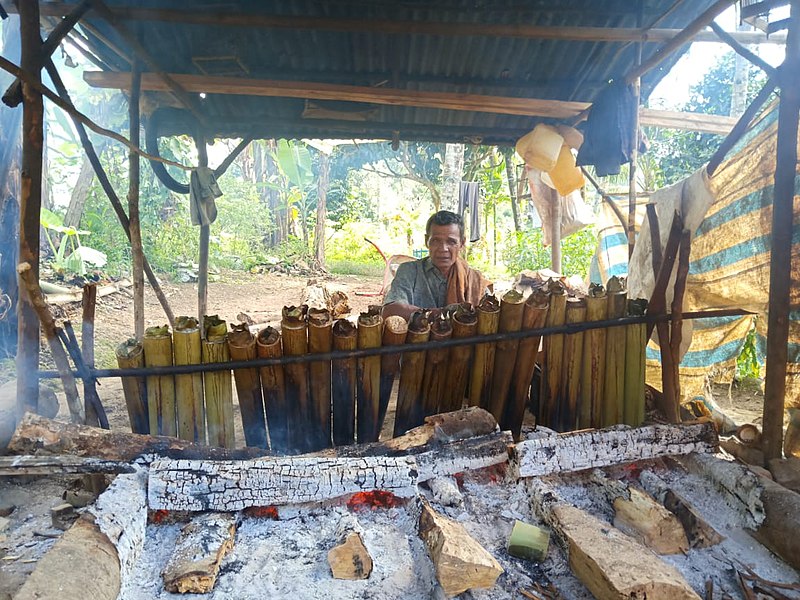
Malamang (Minangkabau, West Sumatra)
During the tradition that the Minangkabau natives regard as malamang, the locals would get together before or after Ramadan to cook a local dish known as lamang. The dish is made of puluik rice (beras ketan) served in a vessel made of bamboo, which is later cooked on a fireplace for approximately six hours. The puluik rice can also be mixed with other ingredients, some of the most popular add-ons are bananas, turmeric, brown sugar, and corn. In certain regencies in Minangkabau, lamang is prepared by a married woman’s family as it later becomes a gift for his in-laws. The locals believe that the lamang dish and the tradition that followed suit was first introduced by an Islamic figure named Syekh Burhanuddin Ulakan in the mid-1600s when he visited Minangkabau for the first time.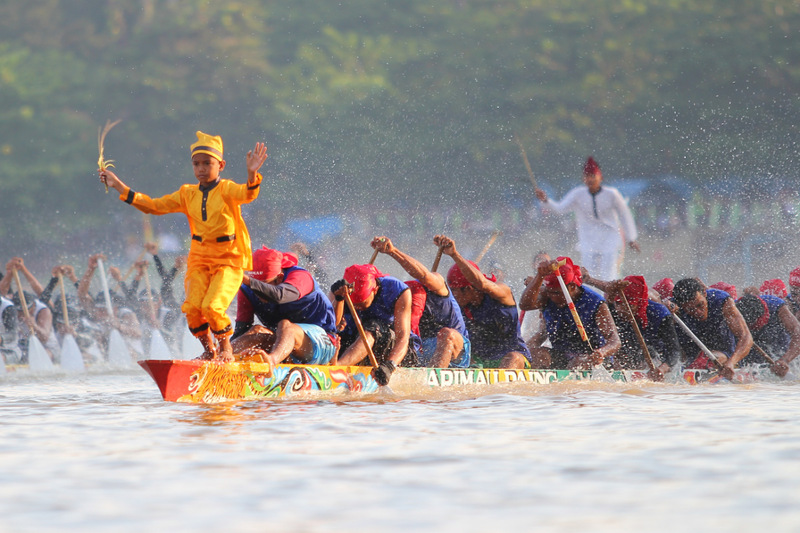
Pacu jalur (Kuantan Singingi, Riau)
Less of a cultural tradition and more of an all-out local festivity, pacu jalur is a rowing race using traditional Riau boats that finds its origin in Kuantan Singingi, Riau, back in the 17th century — the word ‘pacu’ means ‘race’ in local Riau language whereas the word ‘jalur’ means ‘boat’. At the time when there was no land-based transportation, the locals used to rely on river-based transportation to visit nearby villages. Over time, a rowing race among the locals blossomed, during which the boat would be decorated with accessories such as selendang, gulang-gulang, and lambai-lambai. One boat could contain 50-60 participants, billed as ‘anak pacu‘ (roughly translated in English as ‘racing children’). A dancer, typically the youngest out of the participants on each beat, would stand in front of the boat and perform a dance while the rest of the participants would be rowing the boat towards the finish line. During the Dutch occupation, pacu jalur was often held to celebrate the birthdays of Queen Wilhelmina every 31st of August.
Nyorog (Jakarta)
A tradition among the Betawi people, nyorog is typically held seven days before Hari Raya or the end of Ramadan. In the Betawi language, the word ‘nyorog’ can be roughly translated in English as ‘deliver’. During nyorog, the younger members of the family would deliver and present food or gifts to the older members of their family to express the former’s respect and appreciation for the latter. The younger residents of the community are also encouraged to bring gifts for the older residents, such as neighbours or local figures. Local dishes such as ketupat sayur and opor are commonly the gifts that are to be presented, though among the more modernised members of the community, they would often opt for shop-made parcels as their gifts instead. Nyorog is also considered an opportunity for the Betawi people to get in touch with their distant relatives and make amends, as such is also believed to be the true meaning and purpose of Ramadan.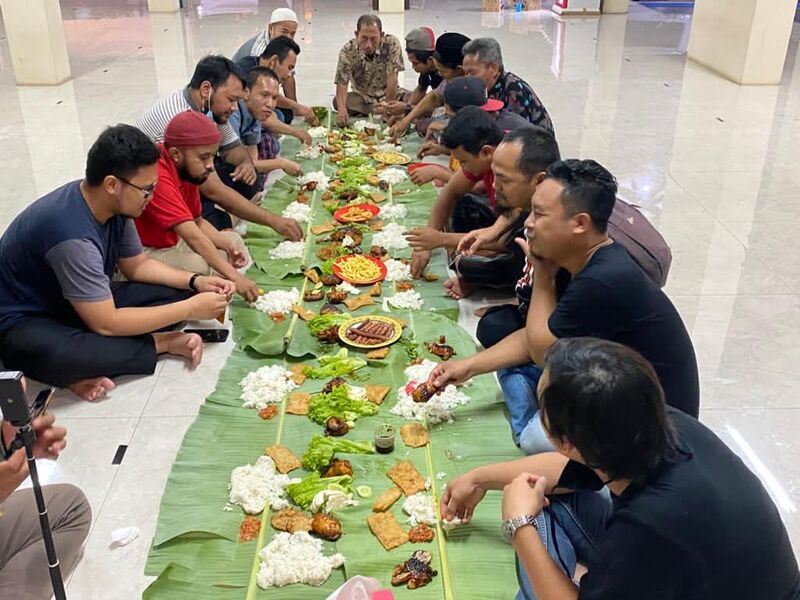
Munggahan (West Java)
For the Sundanese, Ramadan cannot begin without first taking into place a cultural tradition that is known as munggahan. Meaning ‘elevate’ in the Sundanese language, munggahan is often held on the cusp of Ramadan which is marked by, to name a few, visiting distant relatives, saying collective prayers, having a family feast, contributing to charities or donation boxes, water cleansing, and cleaning nearby mosque and family tombs. Munggahan, for the Sundanese, is regarded as an expression of gratitude to the divine and also, an effort of self-purification before entering the month of Ramadan. Historians believe that the tradition of munggahan began in the 7th century.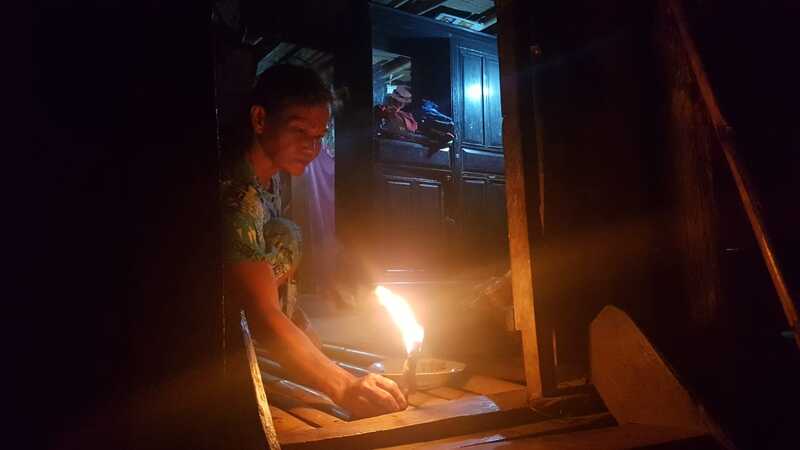
Mattunu solong (Polewali Mandar, West Sulawesi)
The local natives in the Polewali Mandar regency, West Sulawesi, prefer to ring in Ramadan by carrying a tradition dubbed mattunu solong; a tradition that has also been passed in families from one generation to another. In welcoming the beginning of Ramadan, the locals would light up lanterns on different spots of their respective residences, such as the gate, the porch, under the staircases, and even the kitchen. The lanterns, also known locally as ‘sulong’, would also be placed on the sidewalks, resulting in the entire neighbourhood appearing to be set ablaze in light after sundown. The locals believe that mattunu solong can bring forth light for humankind amid the darkness of their sin. The locals would also make the sulong themselves; the variety of lanterns is composed of candlenut fruits wrapped in cotton.




